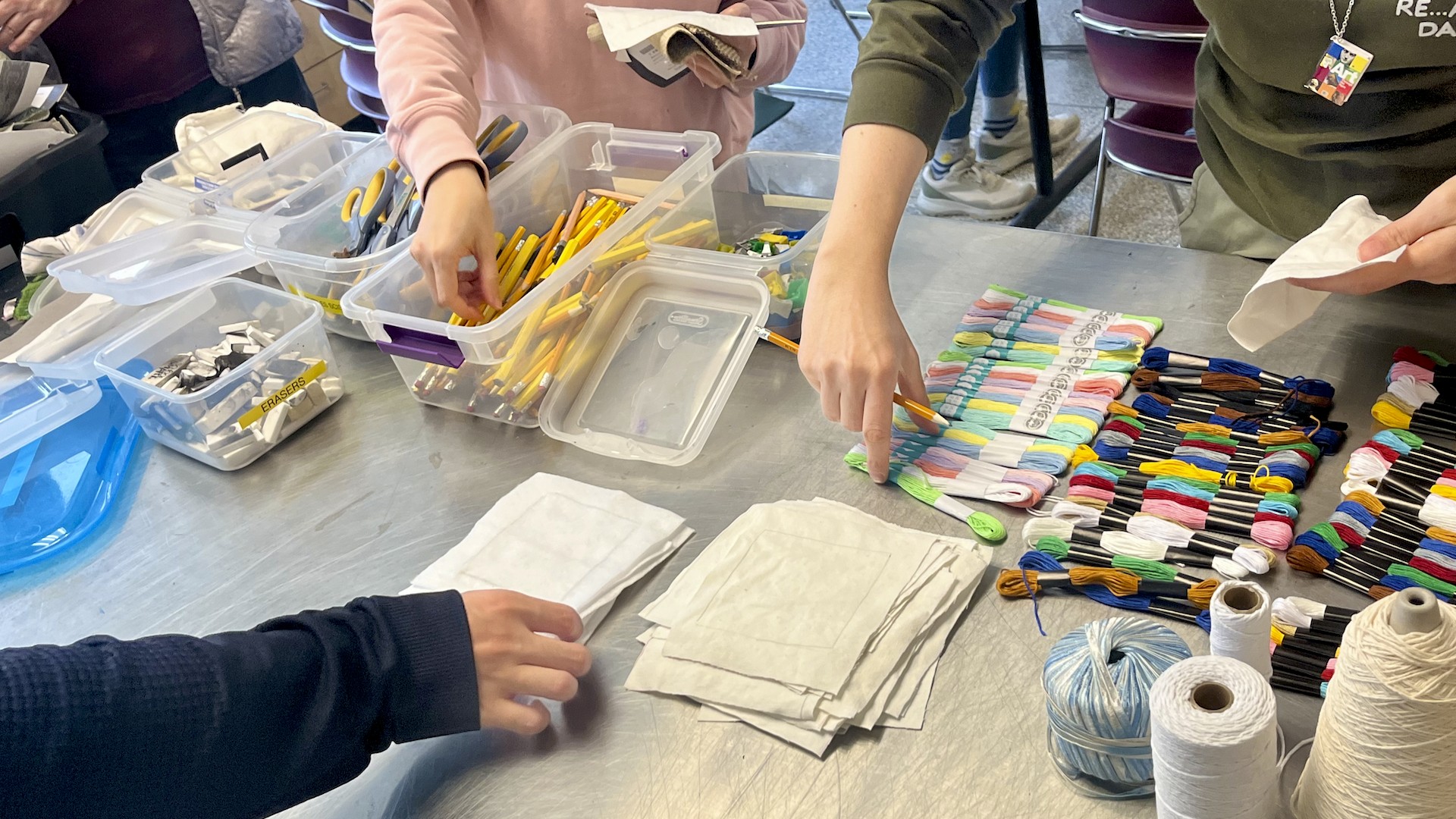
Our teams are currently engaged in three related research projects that weave Textile Cartographies together under the theme of Patterns as Poetic Practice. Our first project explores imagining higher education as a co-creative art-sci-tech commons – an ecosystem of transnational, transdisciplinary and transmedia activations – that bring us together with international partners in Egypt, Colombia and Iran. This builds upon a second project dedicated to arts-based methods that foster intellectual risk-taking and collaborative practices through the arts, such as travelling a/r/tographic concepts. Extending our work to learning with the land, we take up the concept of reciprocity to engage with the land on which we live, learn, teach and create.
We explore the liveliness of these projects as a process of thinking-making-doing through a series of immersive activities spanning stitching, painting, printing, weaving, crocheting, and more, with fibre arts. We are hosting a series of workshops (2023-2024) that will culminate in a threaded ‘x-change’ with our international partners and an exhibition at The University of British Columbia.
This exhibition, Patterns as Poetic Practice, presents transnational, transdisciplinary activations – bringing us together with international partners around the world as a testament to the convergence of cultural heritage, creativity, and individual and communal narratives. Functioning as a hub for artistic exchange, these artworks are a confluence of voices – local artisans from our workshops and a global tapestry of textile artworks, all united by the power of pattern in which each stitch, each weave embodies a cultural thread, and a visual story traversing borders and continents. This exhibition embarks on a journey not just through space, but through time and cultural memory to celebrate the power of textile art as a process of thinking-making-doing with the threads that bind us.
This global conversation through textile recognizes vessels of storytelling, imbued with the poetic resonance of human experience, the act of creation, and the enduring legacy of craft traditions with respect to environmental and sustainability concerns. Through the lens of Textile Cartographies, this collection of artworks becomes a display of aesthetic expression; it emerges as a journey of sensory exploration and intellectual inquiry through traversing the realms of history, identity, and belonging, weaving together threads of commonality amidst the rich tapestry of human diversity.